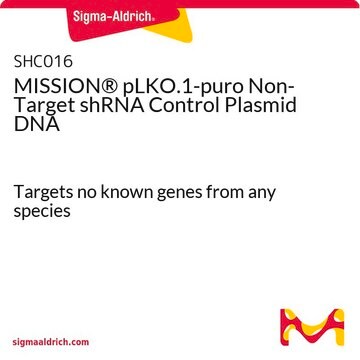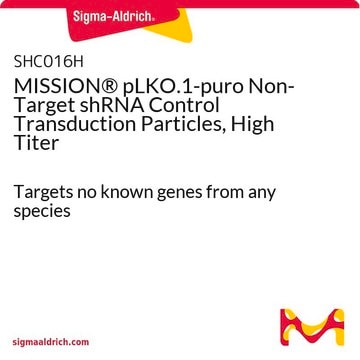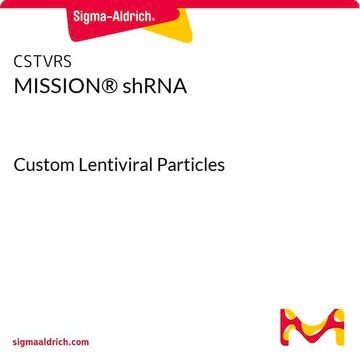SHC016V
MISSION® pLKO.1-puro Non-Target shRNA Control Transduction Particles
Targets no known genes from any species
Sinônimo(s):
MISSION®, MISSION® Control Transduction Particles, negative control, negative shRNA control, non-target control, non-target shRNA, non-target shRNA control, shRNA control
About This Item
Produtos recomendados
Nível de qualidade
linha de produto
MISSION®
concentração
≥1x106 VP/ml (via p24 assay)
Condições de expedição
dry ice
temperatura de armazenamento
−70°C
Procurando produtos similares? Visita Guia de comparação de produtos
Categorias relacionadas
Descrição geral
To see more application data, protocols, vector maps visit sigma.com/shrna.
Aplicação
Nota de análise
Informações legais
Não está encontrando o produto certo?
Experimente o nosso Ferramenta de seleção de produtos.
recomendado
Código de classe de armazenamento
12 - Non Combustible Liquids
Classe de risco de água (WGK)
WGK 3
Ponto de fulgor (°F)
Not applicable
Ponto de fulgor (°C)
Not applicable
Escolha uma das versões mais recentes:
Certificados de análise (COA)
Não está vendo a versão correta?
Se precisar de uma versão específica, você pode procurar um certificado específico pelo número do lote ou da remessa.
Já possui este produto?
Encontre a documentação dos produtos que você adquiriu recentemente na biblioteca de documentos.
Os clientes também visualizaram
Active Filters
Nossa equipe de cientistas tem experiência em todas as áreas de pesquisa, incluindo Life Sciences, ciência de materiais, síntese química, cromatografia, química analítica e muitas outras.
Entre em contato com a assistência técnica











